Shortround6
Lieutenant General
It's mystique of using that notch filed in the hammer nose as a back sight 
Follow along with the video below to see how to install our site as a web app on your home screen.
Note: This feature may not be available in some browsers.
Ad: This forum contains affiliate links to products on Amazon and eBay. More information in Terms and rules
Maybe that's why their shots wander all over the paper as the piece heats up. The New Model Army has a sight grooved into the top strap and doesn't do that. Any wandering that occurs is the shooter's fault.It's mystique of using that notch filed in the hammer nose as a back sight
Interesting about your second Sharp's. Have you gotten a casting of both the chamber And the bore at both chamber and muzzle?Checked for Diameter to spec?
If the chamber is too long (shoulder to barrel bore) you have a free bore situation with unpredictable results for black powder/lead bullet.
Maybe you have just enough shoulder on the barrel that a gunsmith can thread one or more turns to close the chamber free bore dimension?
Yeah I have been seeing anywhere from $225/350 some more with the case with the trimmings 5 and up
Here's one up for auction tomorrow prefer octagon barrel myself
CVA .44 CAL. 8" BLACK POWDER REVOLVER COLT REPLICA
Bid is low now $95 I see 200/225 +18% and shipping is it worth 275/300?
IVAN - you are correct, I was obviously thinking metallic cartridge conversion.Hello Drgondog,
I don't think you understand. These are not cartridge guns. They are nominally .54 cal black powder as in loose black powder fired by a cap. For a .54 cal muzzle loader, the typical projectile is a .535 diameter patched ball or a slightly larger diameter Minie ball.
The Sharps on top has a tight enough bore that a Minie ball cast of wheel weights works just fine. The wheel weight alloy is hard enough that it would not expand if it were used in a muzzle loader, but engraves just fine.
The Sharps on bottom has a larger diameter bore and needs a different sized Minie ball or a "cantilever" bullet that has a base with a ridge and has several diameters of rings. The last ring is so large that it WILL engage the rifling no matter what.
I have Cerrosafe, but have not bothered to do a chamber cast or a cast at the muzzle. Instead, I have slugged them with a soft lead projectile. Projectile measured fine.
I BELIEVE the problem is that there is a loose spot in the barrel or that the rifling may not be consistent. Once I bought the second BP Sharps, I didn't spend a lot of time trying to diagnose the problem.
- Ivan.
I just stumbled on this video of a guy shooting a replica New Model Army nonstop til it fails, no barrel swabbing or nipple picking or cleaning of any kind. Awesome! 108 consecutive rounds. I can't imagine subjecting mine to such abuse, but nice to know she can do it. Try that with your Colt!
I just stumbled on this video of a guy shooting a replica New Model Army nonstop til it fails, no barrel swabbing or nipple picking or cleaning of any kind. Awesome! 108 consecutive rounds. I can't imagine subjecting mine to such abuse, but nice to know she can do it. Try that with your Colt!
Sharps did manufacture a rifle that was chambered for .50-70 Gov. metallic cartridges and some BP Sharps were converted to accept that.
I'm sure your comment was tongue in cheek, but for the benefit of any uninitiated spectators, the nipple is the little protuberance that the percussion cap is pressed onto. After firing, sometimes fragments of the cap are lodged in the nipple's surrounding cavity, interfering with placing a cap for the next shot. A mechanic's pick or similar tool is handy for prying loose these fragments.nipple picking??? Googled it. Now my eyes are one fire. What do you mean?
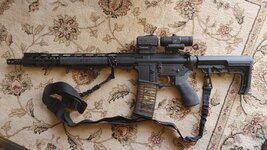
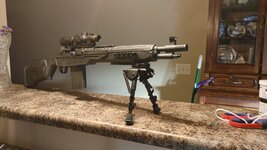
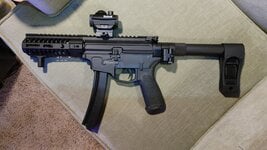
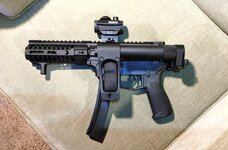
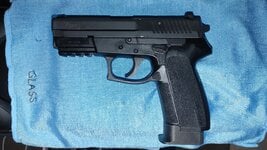
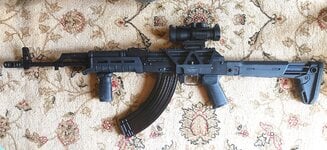
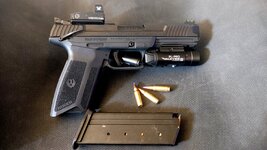
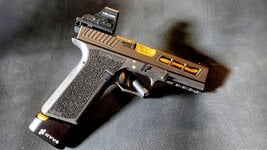
Thank you, I do still need a FAL in my life. I'll have to go back through this thread and catch up, it's been a few years since I last viewed it. A lot of nice guns in here.Nice Collection you have,Jayl .
Unfortunatly there is no good story behind this FAL. Rifle now rests in Captured Armaments Section of Army Museum at Saadabad, Tehran. When it reopens, I'll take lots of photos. there some cool pieces to show.Thank you, I do still need a FAL in my life. I'll have to go back through this thread and catch up, it's been a few years since I last viewed it. A lot of nice guns in here.
You can't blame bad caps on the gun.He actually had plenty of failures during that run
Maybe mine's got bad rifling or something. I always get plenty of lead fouling in the bore during each shooting session, despite using crisco and beeswax pack over the ball to prevent flash over. I don't have a mold for conical pistol bullets, so shoot round balls. Tried a lubed .445 maxi once, but it only left room for about 20 grains of FFFG.The barrel on these revolvers doesn't need swabbing
Roger, concur. That does make a difference.I believe that fellow needs a good inline brass capper.
I have always wanted one of the 1863 Sharps military rifles. Mine are both 1858 commercial types.My Stepdad had an 1863 Carbine which had been converted.
I don't recall much in the way of details, except that it was a falling-block and still had a patchbox on the stock.
You can't blame bad caps on the gun.
..........
Roger, concur. That does make a difference.
Maybe mine's got bad rifling or something. I always get plenty of lead fouling in the bore during each shooting session, despite using crisco and beeswax pack over the ball to prevent flash over. I don't have a mold for conical pistol bullets, so shoot round balls. Tried a lubed .445 maxi once, but it only left room for about 20 grains of FFFG.
The shop that sold me my gun sold me a .451 mold which they said was correct for it and I cast up a bunch of those. I found it took an inordinate amount of effort to force them into the chambers and they shaved off a veritable O ring of lead from the ball. I only fired two cylinders worth of those and they were all over the paper, so I started using .445s I had cast for the Numrich instant muzzle loader and the accuracy improved dramatically. From a bench I can keep all the shots in a six inch circle at fifty feet, but of course, nothing like that offhand. I'm convinced the gun can shoot way better than I can. My vision isn't all that great, which is why I had to give up flying..445 inch is WAY too small for these revolvers. The nominal diameter for lead balls recommended for these guns is .454 inch.